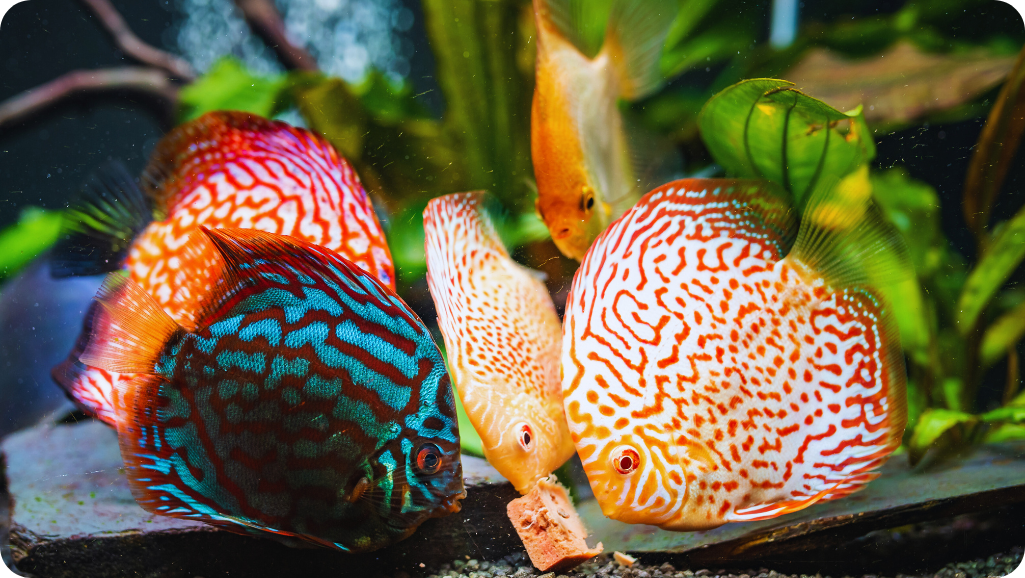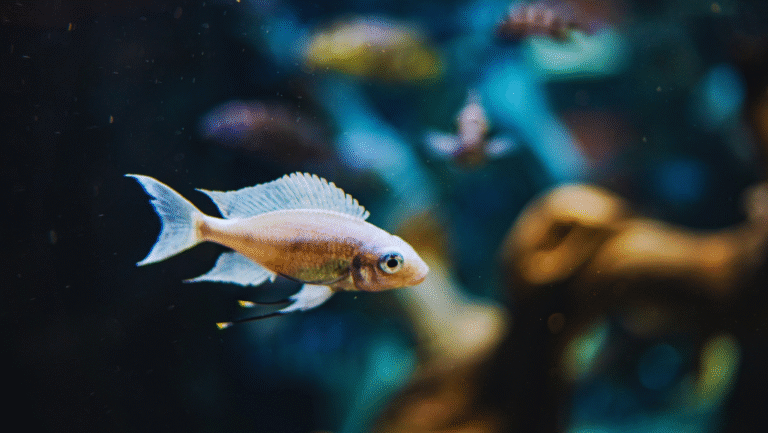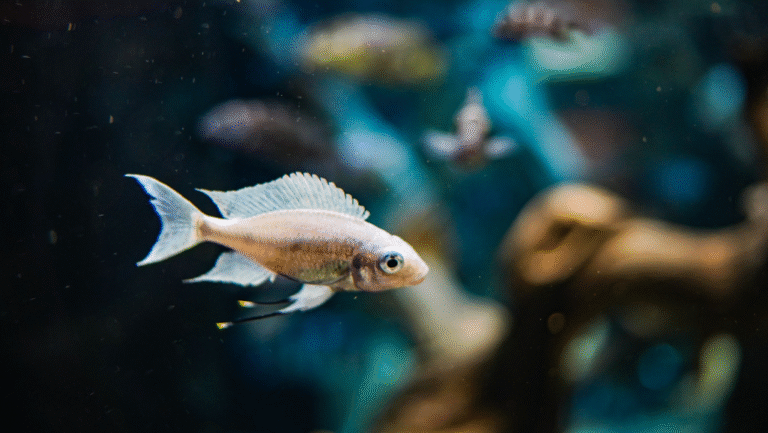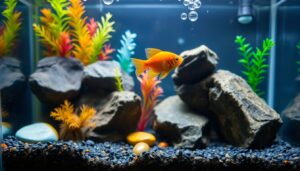Starting your journey to a vibrant aquatic home means picking the right aquarium species. Choosing the best fish for your aquarium is more than just looks. It’s about keeping your fish healthy and happy. Whether you prefer the calm of freshwater aquarium species or the excitement of saltwater aquarium species, the right choice makes your aquarium beautiful and peaceful for your fish.
Key Takeaways
- Researching before buying leads to informed decisions for a successful aquarium setup.
- Different species require specific tank sizes, with larger fish needing more space to thrive.
- Visibility of vibrant colors and unique patterns is often a high priority for aquarists.
- Community tanks should consist of species with a high compatibility rate to ensure peaceful coexistence.
- Considering the average lifespan of fish species is essential for long-term aquarium planning.
- Beginner aquarists may favor species that require minimal expertise for ease of care.
- Understanding breeding requirements and social behavior is crucial for maintaining a balanced ecosystem.
Discover the Diverse World of Aquarium Species
Starting your aquarium journey opens up a world of tropical fish species, rare aquarium species, and exotic aquarium species. You can find a wide variety of fish and colors from nature. This adventure not only makes your home look great but also challenges you to learn more.
There are tanks for community fish and others for more delicate fish tank species. Each setup has its own needs, like water type, temperature, shelter, and food. It’s important to meet these needs for your fish to thrive.
| Aquarium Location | Unique Offerings | Main Attractions |
|---|---|---|
| Georgia Aquarium, USA | Over 100,000 creatures from 500 species | Extensive freshwater and saltwater tanks |
| E.A. Aquarium, Singapore | Home to 800+ marine species | 36-meter acrylic tunnel |
| Okinawa Churaumi Aquarium, Japan | Large Kuroshio Sea tank | Whale sharks, Manta rays |
| National Aquatics Center, China | Diverse marine life | Iconic “Water Cube” ocean tank |
| Seoul Aquarium, South Korea | Broad range of ocean animals | Sharks, rays, sea turtles |
| Ushuaia Aquarium, Argentina | Marine life from the Southern Ocean | Seals, sea lions |
| London Zoo’s Fish House | First public aquarium | Historical marine collections |
Major aquariums around the world show the beauty of rare aquarium species. They not only display exotic aquarium species but also work on conservation and education. Visiting an aquarium can teach you a lot about the needs and beauty of tropical and rare fish, deepening your love for aquarium keeping.
Setting Up Your Aquarium for Success
Creating a thriving home for your tropical aquarium fish starts with a good aquarium setup. This step is key for your fish’s health and the beauty of your tank. It ensures your aquatic life stays healthy and looks great for a long time.
The Importance of Selecting Appropriate Tank Size and Shape
Choosing the right tank size and shape is crucial. Big tanks keep water stable and give fish and plants room to grow. A balanced tank is important for your fish’s happiness and health. For example, a 20-gallon high tank is best for planted tanks.
Understanding Water Parameters: pH, Hardness, and Temperature
Water quality is vital for your aquarium’s health. Most tropical aquarium fish like water between 75° and 80°F. They also need a pH between 6.5 and 7.5. Keeping these levels right is key for your fish’s well-being.
Essential Equipment: Filtration, Lighting, and Heaters
Good filtration, lighting, and heating are must-haves for a healthy tank. For example, using two 100W heaters ensures backup in case one fails. Lighting should also support plants and make your tank look beautiful.
| Equipment | Specification | Recommended for |
|---|---|---|
| Power Filter | 100W Submersible | Up to 20 Gallon Tanks |
| Heater | 100W x2 | Backup functionality |
| LED Lighting | Freshwater LED light | Planted and Tropical Tanks |
| Substrate | Aquarium Gravel/Sand | Enhancing aesthetic and utility |
Success in aquarium setup comes from choosing and maintaining the right equipment. Also, adjust the environment to meet your best aquarium species‘ needs.
Choosing Your Fish: A Balancing Act of Beauty and Harmony
When setting up an aquarium, it’s important to balance compatible aquarium species with colorful aquarium species. This balance makes your aquarium look great and keeps the marine life healthy. Adding aquarium plants is also key. They decorate and help the water quality.
To create a balanced ecosystem, think about the fish’s nature and needs. Choosing wisely can avoid problems like aggression and disease. Using Feng Shui can help pick peaceful fish like goldfish or koi for good luck.
Feng Shui says placing an aquarium in certain spots can improve your life. It suggests having nine fish, with eight active ones and one black fish to absorb bad energy. This makes the tank’s energy better and adds beauty with movement and color.
For small tanks, consider adding nano fish species and invertebrates. Use the five Feng Shui elements: wood, fire, earth, metal, and water. This balance makes your tank look good and improves the energy in your space.
Keeping your aquarium right is more than just feeding and cleaning. It’s about watching the water quality, keeping plants healthy, and making sure the fish are well. Following a good feeding schedule and regular care is important for a thriving tank, as Feng Shui suggests.
| Feng Shui Element | Representation in Aquarium | Benefits |
|---|---|---|
| Wood | Aquarium Plants | Improves water quality, provides shelter |
| Fire | Lighting | Enhances color visibility, essential for plant growth |
| Earth | Rocks | Adds aesthetic value, offers hiding spots for fish |
| Metal | Accessories | Supports structural features, affects aesthetics |
| Water | Aquarium Water | Essential environment for marine life |
In conclusion, using Feng Shui in your aquarium can make it beautiful and healthy. By picking the right fish and plants, and keeping up with care, your aquarium can bring joy and peace to your home.
Popular Freshwater Aquarium Species for Beginners
Starting an aquarium can be exciting but also a bit scary for beginners. Picking the right freshwater aquarium fish is key. Choose beginner-friendly aquarium species that are easy to care for and do well in aquariums.
Betta Splendens: The Vibrant Siamese Fighting Fish
Bettas are loved for their bright colors and fancy fins. They are great for beginners. A single male Betta needs a 5-gallon tank. Make sure it’s quiet and peaceful for them.
Guppies: Colorful and Easy-to-Breed Favorites
Guppies are easy to care for and look amazing. They do well in a 10-gallon tank. They’re perfect for beginners because they’re easy to breed and don’t need much care.
Zebra Danios: Active and Hardy Companions
Zebra Danios add energy to your tank. They like cooler water and are easy to care for. Keeping a group of them makes your tank lively.
Keeping your tank clean is important for your fish’s health. Use the right tools and set up your tank well. Learning about aquarium care helps keep your fish happy. Choosing the right fish is key to a balanced and enjoyable aquarium.
| Species | Recommended Minimum Tank Size | Water Temperature Range | Group Size |
|---|---|---|---|
| Betta Splendens | 5 gallons | 76-82°F | Solo |
| Guppies | 10 gallons | 72-82°F | Small groups |
| Zebra Danios | 10 gallons | 64-75°F | 5-6 |
Success in aquarium keeping depends on understanding your fish’s needs. Start with these easy-to-care-for species. They will make your hobby peaceful and beautiful.
Saltwater Aquarium Species: Creating a Mini Ocean at Home
Saltwater aquariums let us see the beauty of marine life up close. They let us create a colorful ocean world in our homes. To start a thriving marine aquarium species environment, we need to know the basics and the best conditions for tropical fish species.
Choosing the right equipment is key to a successful marine ecosystem. For example, the IM Nuvo Encore 20 Pro Bundle is great for marine fish. It has 20 gallons split into two sections, perfect for showing off different saltwater aquarium species. Each section needs important equipment like the AquaMaxx NF-1 Nano Protein Skimmer, which is strong enough for a 20-gallon tank.
Check out more tips and experiences on species-only marine
For the substrate, mix 10 lbs of CaribSea Fiji Pink Sand with about 20 lbs of CaribSea Life Rock. This creates a natural habitat for marine aquarium species to thrive. Using the API Marine Saltwater Master Test Kit helps keep the water safe for sensitive tropical fish species.
| Equipment | Specifications | Recommended Quantity |
|---|---|---|
| AquaMaxx NF-1 Nano Protein Skimmer | Compatible with 20 Gallon Tank | 1 |
| Eheim Jager Aquarium Heater | 50 Watt | 2 |
| API Marine Saltwater Master Test Kit | Ammonia, Nitrites, Nitrates | 1 Kit |
| CaribSea Fiji Pink Sand | 10 lb bag | 1 Bag |
| CaribSea Life Rock | 20 lbs | 20 lbs |
Setting up a saltwater aquarium species like clownfish or tangs is not just beautiful. It’s also very rewarding. But, we must pay close attention to the tank’s equipment and the water’s conditions. This is crucial for a healthy marine life habitat at home.
Exotic Aquarium Species: Unique Beauties for Advanced Hobbyists
Exploring the world of exotic aquarium fish is both exciting and challenging. Advanced hobbyists enjoy the thrill of caring for unique aquarium species. These fish not only add beauty to their tanks but also test their skills.
They must focus on creating the perfect environment for exotic fish species. This includes specific water conditions and special care routines.
Choosing between Saltwater Aquarium Fish or rare freshwater fish requires dedication. Each rare aquarium species needs careful attention. This hobby demands a deep understanding of their needs and habitats.
Meeting the needs of each species can be tough, but the joy of a thriving aquarium is worth it. Here’s a closer look at the care needs of some popular exotic species:
| Species | Difficulty | Adult Size | Ideal Minimum Tank Size |
|---|---|---|---|
| Betta Fish (Betta splendens) | Intermediate | 2 to 3 inches | 5 gallons |
| Glass Catfish (Kryptopterus vitreolus) | Moderate | Up to 5 inches | 30 gallons |
| Black Ghost Knife Fish (Apteronotus albifrons) | Moderate to Difficult | Up to 20 inches | 100 gallons |
| Bichir (Polypterus delhezi / Polypterus senegalus) | Difficult | 10-30 inches | 90 gallons |
Following these guidelines helps ensure the health and happiness of these exotic aquarium fish. Each unique aquarium species adds to the beauty of your aquarium. It’s crucial to keep learning about the best care for these exotic fish species.
Keeping rare aquarium species is a big responsibility and a lifelong learning journey. It rewards those who are patient and passionate with a breathtaking display in their home.
Aquarium Species and Their Care Needs
Understanding the needs of aquarium species is key. This includes their diet and how they live together. Knowing this helps keep both freshwater and saltwater fish, as well as invertebrates, healthy. Let’s explore the important aspects of fish care.
Dietary Considerations for Optimal Health
Different fish have different food needs. For example, the Four-eyed Butterflyfish needs a special diet. On the other hand, the Rummynose can eat a variety of foods. It’s important to know these differences to care for your fish right.
Behavioral Traits and Social Structure
Fish behavior affects their health and happiness. Some fish, like Cherry Barbs, do well in groups. But others, like some aggressive species, need their own space. Each fish has its own way of acting, and we must plan our tanks and choose our fish carefully.
Longevity and Lifecycle Maintenance
How long fish live varies. Some, like Neon Tetras, only live for 5 years. Others, like the Panda Corydoras, can live up to 10 years. As fish grow older, their care needs change. We must adjust their diet and tank setup to help them live a long, healthy life.
| Species | Adult Size | Recommended Tank Size | Lifespan |
|---|---|---|---|
| Neon Tetra | 1 1/2 inches | 10 gallons | 5 years |
| Clownfish | 3-4 inches | 20 gallons | 6-10 years |
| Yellow Tang | 6 inches | 30 gallons | 5-7 years |
| Bluehead Wrasse | Up to 8 inches | 75 gallons | 5-8 years |
| Gray Angelfish | 20 inches | 200 gallons | 10-15 years |
Choosing the right tank size and tank mates is crucial. It helps create a peaceful home for your fish. By understanding these needs, you can ensure your fish live happy, healthy lives.
Common Mistakes to Avoid When Selecting Fish
Choosing the right beginner aquarium species is key to your fish’s health. It’s important to pick the right water tank species and keep the tank clean. This is especially true for new fish owners.
Start with a tank bigger than 20 gallons. This size helps keep water stable and good for aquarium plants. Let the water sit for a day before adding fish. This helps the water be safe for your fish.
Don’t overcrowd your tank. Too many fish can make the water dirty and low on oxygen. Use the rule of thumb to guide you, but cut it back to 80% to give fish room to breathe.
Here’s a table summarizing key recommendations for novice aquarium enthusiasts:
| Parameter | Guideline | Benefit |
|---|---|---|
| Minimum Tank Size | 20 gallons | Stability in water conditions |
| Initial Fish Count | Two small fish | Allows beneficial bacteria to develop |
| Water Filtration | 3 times per hour | Keeps water clean and oxygen-rich |
| Feeding Frequency | Feed amount consumable in 3 minutes | Prevents overfeeding and water pollution |
| Species Compatibility Research | Mandatory before purchase | Prevents aggression and stress |
| Quarantine New Fish | 21-28 days | Prevents disease spread |
Adding plants to your tank is a good idea. They help keep the ecosystem balanced and can feed some fish. Make sure to cycle your tank before adding fish. This helps create a healthy environment for your fish.
Keep up with regular tank maintenance. This includes water changes and checking water parameters. Understanding your fish’s needs and keeping their tank clean is crucial for their health.
Making Your Choice: Compatibility and Community
Setting up an aquarium means picking the right fish community. It’s not just about choosing popular fish for aquarium setups. You also need to think about how well each fish gets along and their personalities. This helps create a peaceful environment.
For example, schooling fish like Neon Tetras and Cherry Barbs do best in groups of five or more. But, not all fish like being in groups. Male Bettas, for instance, can be very aggressive and need to be alone to avoid fights. This shows how important it is to know about each fish’s needs.
| Aquarium Size | Suitable Fish | Number of Fish |
|---|---|---|
| 10-gallon freshwater | Neon Tetras, Cherry Barbs, 1 Male Betta | 6-8 small fish |
| 20-gallon freshwater | Swordtails, Snakeskin Gouramies | Multiple, as per space |
| Large tanks (125-liter) | Bristlenose Pleco, Redline Torpedo Barb | Up to 35 fish |
Small tanks (10 to 20 gallons) are great for slender fish like Tetras or Gouramis. But, they’re not good for bigger fish that make more mess, like Goldfish. This is why knowing what each common aquarium species needs is key.
Tools like the Community Creator can help pick the best fish for your tank. It gives tips on stocking levels, tank mates, and top aquarium species. This ensures a balanced and interesting community.
The joy of aquarium keeping is in creating a balanced world for your fish. By picking the right mix of fish, you can enjoy a beautiful and thriving aquatic environment.
Conclusion
Maintaining a healthy aquarium is more than a hobby. It’s a journey into the world of marine life. Choosing the right fish for beginners or a mix of saltwater fish starts with research. It shows a commitment to a balanced ecosystem.
Just like zoos in the U.S. help protect species, aquarium lovers play a key role too. They help keep aquatic life thriving through responsible care.
The alarming drop in vertebrate populations since 1970 is a wake-up call. It reminds us of the importance of caring for both freshwater and saltwater fish. True dedication means understanding breeding challenges and supporting wildlife re-introductions.
It also means joining global efforts to share conservation knowledge. Public aquariums like the Monterey Bay Aquarium and the Georgia Aquarium show us how to engage with our planet sustainably.
Caring for fish is also about education and action. Supporting local aquariums and spreading awareness are important steps. By following laws like the Animal Welfare Act and the Endangered Species Act, we can all help.
Every choice we make, from the fish in our tanks to our seafood choices, matters. It’s a way to preserve Earth’s biodiversity. With over 394 species in a mid-sized aquarium, our actions can make a difference.



















